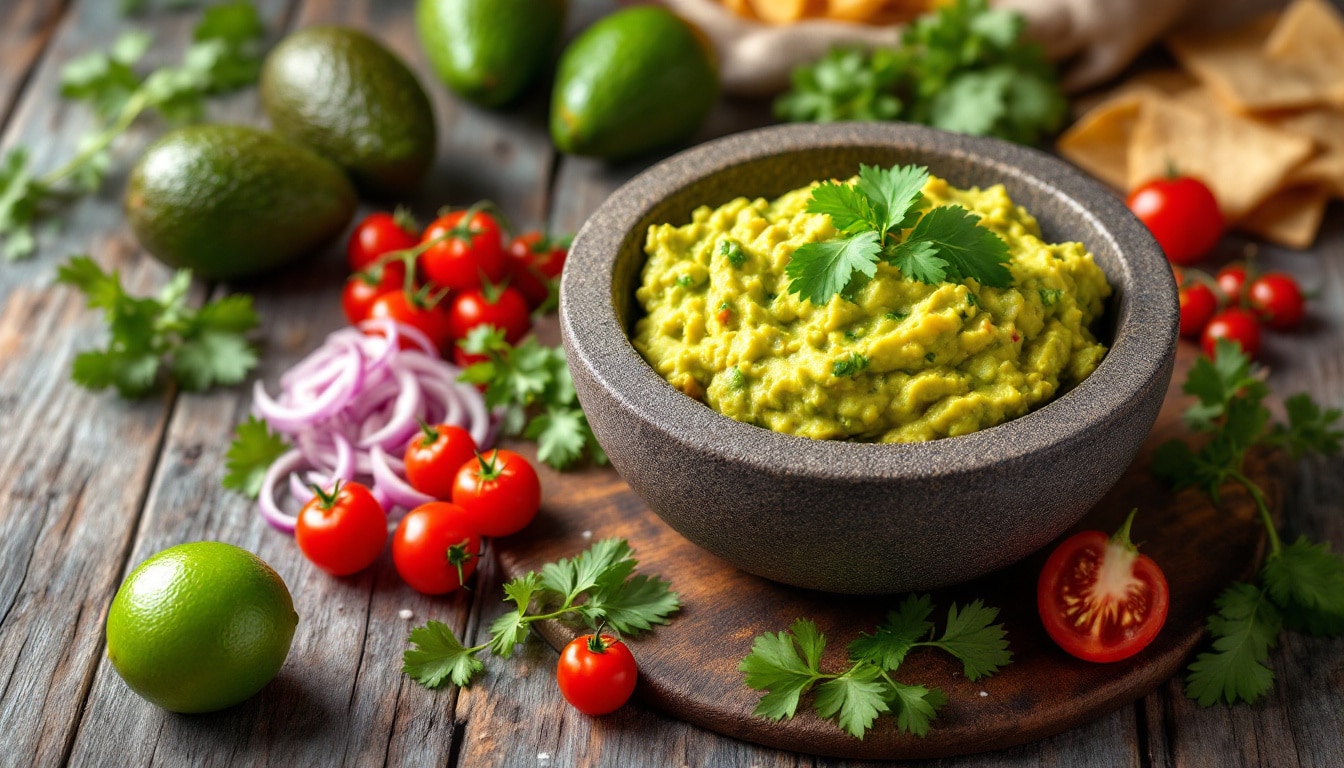Le fondant au chocolat est sans conteste l’un des desserts les plus appréciés, et pour cause ! Cette douceur allie la richesse du chocolat noir à une texture fondante qui fait chavirer les cœurs. Que ce soit pour un dîner entre amis ou un moment cocooning à la maison, ce dessert s’invite avec simplicité sur toutes les tables. En plus, il se prépare en un rien de temps, permettant ainsi de savourer un moment de plaisir rapidement. Décryptons ensemble cette recette emblématique qui saura séduire les amateurs de chocolat.
La recette du fondant au chocolat en 10 minutes
Préparer un fondant au chocolat savoureux en seulement 10 minutes est une mission tout à fait réalisable. Pour cela, il est nécessaire de réunir quelques ingrédients de base qui, lorsqu’ils sont combinés, donnent un résultat époustouflant. Voici une liste des ingrédients nécessaires pour réaliser cette recette incontournable :
- 100 g de chocolat noir
- 50 g de beurre
- 50 g de sucre
- 2 œufs
- 30 g de farine
- 1 pincée de sel
Cette liste d’ingrédients se traduit par un dessert à la fois simple et efficace. En ayant ces éléments sous la main, il suffit de suivre les étapes suivantes pour impressionner ses convives.
Préparation étape par étape
Pour réussir ce fondant au chocolat, il faut suivre une méthode précise. Le temps de cuisson est essentiel pour obtenir ce cœur coulant qui fait toute la magie du dessert. Voici les étapes à suivre :
- Préchauffez le four à 200°C.
- Beurrez et farinez légèrement des ramequins pour éviter que le fondant n’accroche.
- Dans une casserole, faites fondre le chocolat et le beurre au bain-marie jusqu’à obtenir un mélange lisse.
- Dans un saladier, fouettez ensemble les œufs et le sucre jusqu’à ce que le mélange devienne pâle et mousseux.
- Incorporez délicatement la farine tamisée et la pincée de sel, puis ajoutez le mélange chocolat-beurre fondu.
- Versez la pâte dans les ramequins en les remplissant aux trois-quarts.
- Enfournez pendant environ 8 à 10 minutes. Vérifiez la cuisson : le dessus doit être cuit, mais le cœur doit rester coulant.
- Laissez tiédir 2 minutes avant de démouler délicatement.
La clé du succès réside dans le respect des temps de cuisson. Un petit conseil : si vous souhaitez garantir un cœur fondant, mieux vaut opter pour un temps de cuisson légèrement inférieur. Chaque four étant unique, une surveillance attentive est de mise.
Les astuces pour un fondant au chocolat inratable
Réaliser un fondant au chocolat parfait demande une petite dose de technique, mais plusieurs astuces permettent de le rendre encore plus savoureux. Voici quelques conseils précieux pour venir à bout de ce dessert avec brio :
Choix des ingrédients
Un bon chocolat est la base d’un fondant réussi. Il est conseillé d’opter pour un chocolat noir contenant au moins 60 % de cacao pour garantir une profondeur de goût. De plus, le choix du beurre est primordial — optez pour un beurre de qualité qui ajoutera de la richesse à la préparation.
Audit avant de servir
Les moments de dégustation peuvent être améliorés avec quelques attentions supplémentaires :
- Pour un fondant plus gourmand, insérez un carré de chocolat au centre de la pâte avant la cuisson.
- Ajoutez une cuillère à soupe de café fort pour intensifier le goût du chocolat.
- Pour les amateurs de noix, quelques éclats de noisettes ou d’amandes viennent ajouter un croquant agréable en bouche.
Ces petits ajouts rendent le dessert encore plus irrésistible et permettent de lui donner une touche personnelle.
Variantes à tester pour le fondant au chocolat
La magie du fondant au chocolat réside également dans sa polyvalence. En effet, il existe de nombreuses façons de le décliner pour satisfaire toutes les papilles. Voici quelques idées à essayer :
| Type de fondant | Description |
|---|---|
| Fondant chocolat-noisette | Ajoutez une cuillère de pâte à tartiner ou des noisettes concassées pour une saveur pralinée. |
| Fondant au chocolat blanc | Remplacez le chocolat noir par du chocolat blanc pour une douceur plus sucrée. |
| Fondant vegan | Utilisez de l’huile de coco à la place du beurre et remplacez les œufs par de la compote de pommes, tout en maintenant la texture fondante. |
| Fondant aux fruits rouges | Incorporez des fruits rouges pour une touche d’acidité qui équilibrera le chocolat. |
Chaque variante apporte une dimension nouvelle au dessert, permettant de s’adapter aux envies de chacun. Les possibilités sont infinies et la créativité en cuisine n’a pas de limites.
Comment accompagner son fondant au chocolat ?
Un bon dessert nécessite souvent un accompagnement à la hauteur. Pour rehausser le goût du fondant au chocolat, il est judicieux de choisir des éléments qui compléteront le chocolat plutôt que de le masquer. Voici quelques suggestions :
- Une boule de glace à la vanille ou aux noisettes pour un contraste chaud-froid, irrésistible.
- Un coulis de fruits rouges pour apporter une note acide.
- Un filet de caramel au beurre salé pour un mélange sucré_saler divinement bon.
Ces accompagnements permettent d’ajouter une nouvelle dimension à la dégustation tout en équilibrant les saveurs.
Les bienfaits du chocolat fondu
Au-delà de sa saveur exquise, le chocolat noir a de nombreuses vertus pour la santé. En consommé avec modération, il offre des bénéfices qui ne sont pas négligeables. Voici quelques points à garder en tête :
- Riche en antioxydants, le chocolat noir contribue à la protection des cellules.
- Il favorise la production de sérotonine, souvent appelée « hormone du bonheur ».
- Le chocolat noir peut également améliorer la circulation sanguine et abaisser la pression artérielle.
Intégrer le chocolat dans son alimentation est donc un plaisir non seulement gustatif, mais aussi bénéfique pour le moral. Bien sûr, il ne s’agit pas de tomber dans l’excès, mais de savourer ces petites douceurs de manière raisonnable.
Pourquoi ce dessert est idéal pour toutes les occasions ?
Le fondant au chocolat se prête à toutes les circonstances, que ce soit un dîner romantique, un repas de famille ou un goûter improvisé. Sa simplicité d’exécution et son goût irrésistible en font un incontournable des cuisines. Cette recette rapide permet également de s’adapter aux imprévus : en 10 minutes, un dessert haut de gamme peut être réalisé ! De plus, il est facile à personnaliser selon les préférences de chacun.
Cas pratiques
Voici quelques idées de situations où le fondant au chocolat brille par sa présence :
- Un anniversaire : en l’accompagnant de bougies et d’une crème chantilly.
- Un repas entre amis : pour épater sans effort, servez-le avec une boule de glace.
- Un moment cocooning : parfait pour se réconforter avec un thé chaud.
Chaque occasion se transforme en un moment de partage et de plaisir, renforçant ainsi les liens entre convives.
Préparer un fondant au chocolat au micro-ondes
Pour ceux qui manquent de temps, il est également possible de réaliser un fondant au chocolat au micro-ondes. Cette méthode reste rapide, tout en permettant d’obtenir une texture fondante. Voici comment procéder :
- Dans un bol, mettez le chocolat et le beurre, faites chauffer par intervalles de 30 secondes.
- Ajoutez le sucre et les œufs, puis mélangez bien.
- Incorporez la farine et remuez délicatement.
- Cuisez dans un récipient adapté au micro-ondes pendant 1 min 30 à 2 min. Le centre doit rester un peu tremblotant.
Avec cette méthode, le fondant est prêt en un éclair, idéal pour les envies subites de chocolat.
Les inconvénients à tester cette méthode
Bien que cette méthode soit parfaite en termes de rapidité, il faut tout de même être conscient que la texture peut légèrement varier par rapport à celle obtenue au four. Pour garantir le bon résultat, une attention particulière aux temps de cuisson est nécessaire.
En somme, chaque cuisinier peut adapter cette recette selon ses préférences, tout en se régalant à chaque bouchée. Le fondant au chocolat est une véritable ode à la gourmandise.


